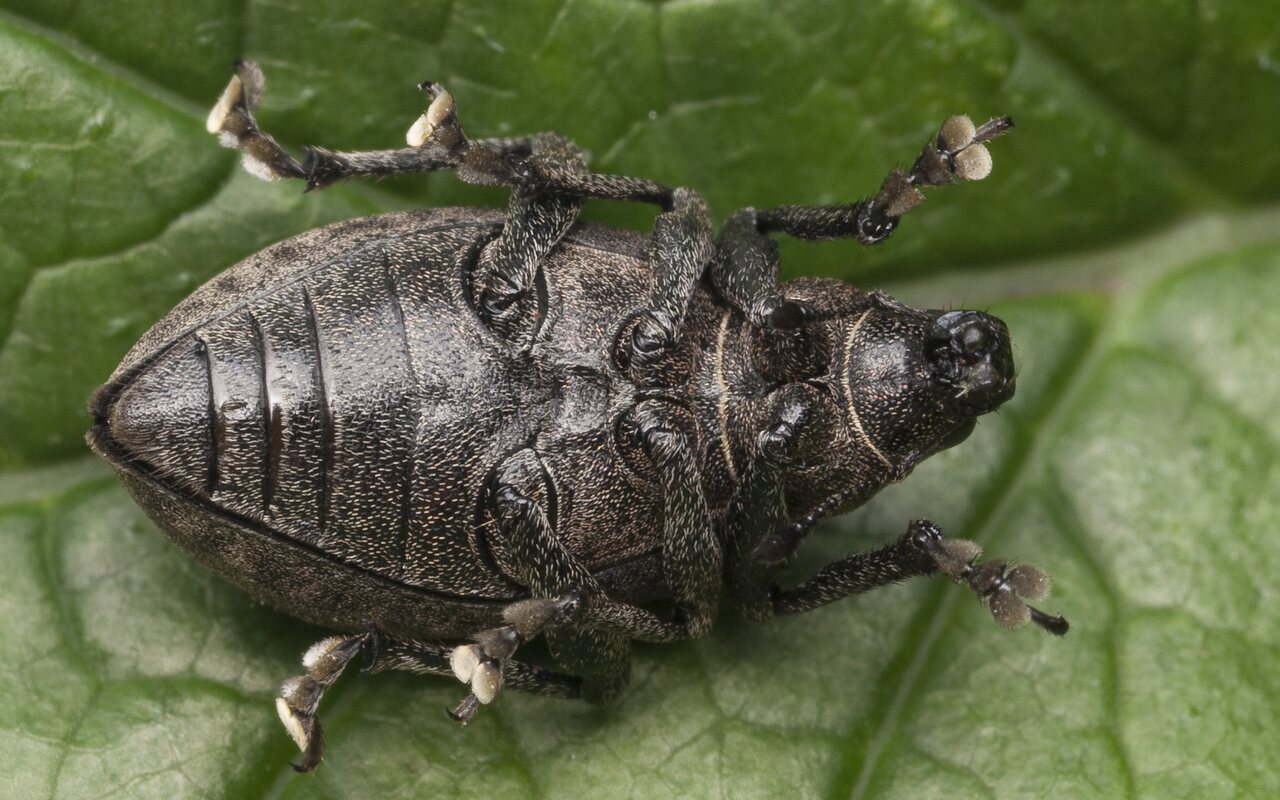
Liophloeus tessulatus · barštinis straubliukas
- chequered weevil
- Würfelfleckige Staubrüssler
- barštinis straubliukas
- oskardzik korzeniowy
- kirskålsvivel
ukbeetles.co.uk/liophloeus-tessulatus
This weevil occurs from lowland to low mountain altitudes throughout Europe from the Mediterranean north to the UK and several southern provinces of Fennoscandia, it extends east into Ukraine and western parts of Russia but is absent from adjacent parts of Asia and North Africa. Typical habitats are cooler and damp woodland margins, damp grassland, river valleys, parkland and disturbed areas, they often occur among extensive and lush nettle beds or on ivy though during hot summer days they also visit umbel flowers and foliage and may often be seen walking or basking on pathways or walls etc. Across lowland Europe, including the UK, the species is bisexual but at higher European altitudes it is parthenogenetic, adults occur year-round and are active from early spring until late in the autumn, they breed through spring and early summer after a period of feeding on various herbaceous plants, commonly umbels or thistles but also others. Females oviposit from mid-May until mid-June, they lay batches of between 10 and 100 eggs on the underside of leaves and cover them with leaf fragments, herbaceous plants are sometimes chosen but the main host is ivy growing in cool situations such as hedgerows or on wooded margins. Larvae emerge after two weeks or so and fall to the soil where they will feed on rhizomes or shallow roots, feeding continues through the summer and some will pupate in the soil in the autumn, these produce adults that will remain in the pupal chamber and overwinter, smaller larvae continue feeding into the autumn when they will burrow down to 30-40 cm in response to the cold and overwinter. Overwintered larvae ascend and continue feeding in the spring, they pupate from March and this stage lasts for three weeks. Overwintered adults may appear very early, from February, but population peaks occur in May or June when they are joined by the spring generation. Adults may be sampled by general sweeping or by searching umbel or nettle foliage, especially when this is near to dense growths of ivy, they are flightless and mostly nocturnal and have often been found among ivy stems and foliage on the ground around old trunks and so suitably placed pitfall traps may also produce them.
Adults are large, 6.5-12.5 mm and distinctive due to the rounded and convex form and tessellated elytral pattern. Head, including the rostrum, with dense narrow and elongate scales, these are variable in colour but usually brown or grey and faintly metallic, often having a bronze appearance, elytra with much shorter but usually denser scales although the punctured striae are usually obvious, these vary in colour but (in fresh specimens) consist of longitudinal rows of lighter and darker scales. A form almost devoid of scales also occurs and may be found among normal specimens. Head broadest at the base and narrowed to weakly convex eyes, rostrum elongate and expanded around the scrobes which are partly visible from above, antennal scape long and gradually and only weakly broadened from a slender base, funiculus 7-segmented and the club long, slender and pointed. Pronotum broadest at or a little behind the middle and narrowed to almost straight anterior and posterior margins, all angles distinct, surface evenly convex although in most specimens there is a glabrous longitudinal median line which may be slightly raised. Elytra broadly oval, about 1.5X longer than wide, with rounded shoulders and curved lateral margins, all striae visible as series of punctures among the scales and all interstices flat. Front femora clearly toothed below, front tibiae expanded internally at the apex, claws connate and smooth. Males are on average smaller and have narrower and more elongate elytra, this is usually obvious when specimens are placed together.
‥
0 comments
Add a comment